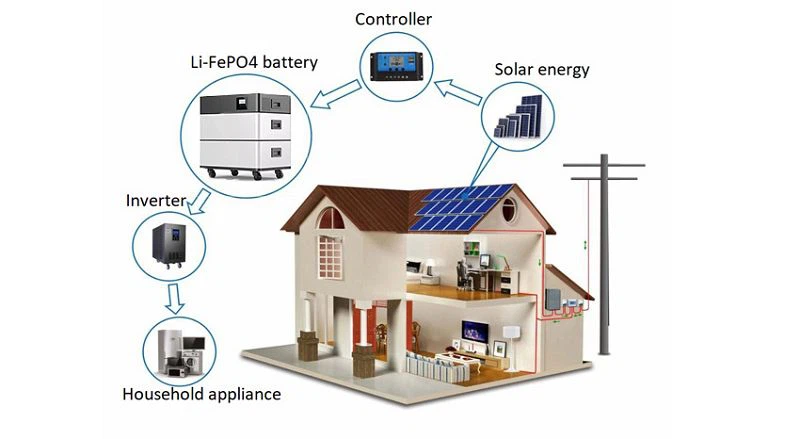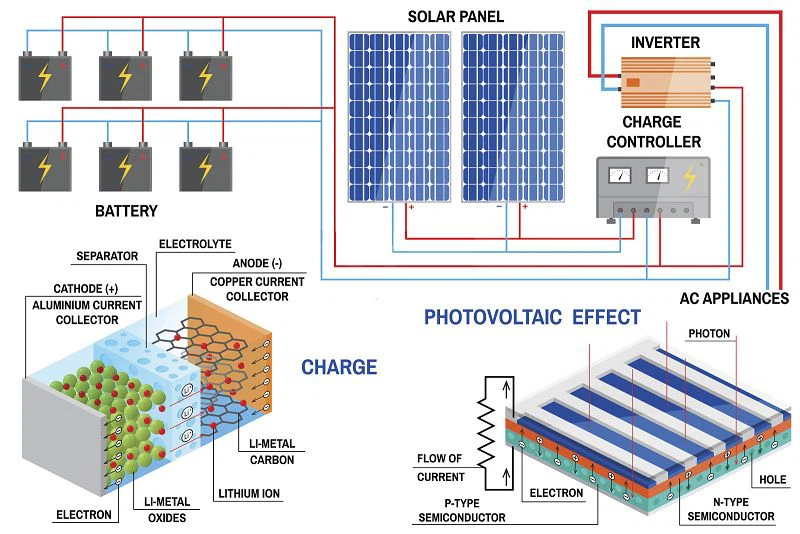I: The intelligence of lithium iron phosphate batteries
With the development of science and technology, ordinary lithium batteries can no longer meet the increasingly technological needs of consumers for lithium batteries. High-tech enterprises continue to innovate to realize the intelligence of lithium batteries. Since a single lithium cell cannot satisfy most electronic devices, multiple cells connect in series and parallel to form a battery pack. However, there are numerical differences between lithium batteries in capacity, voltage, internal resistance, etc., which will affect the stability of battery operation. Therefore, the smart LiFePO4 is inevitable.
The structure of smart LiFePO4
mainly divides into lithium battery, battery protection board (BMS), battery
fixing bracket, and wire. BMS coordinates the tolerance, pressure, and internal
resistance difference among various cells. BMS is a complete set of charge and
discharge management, which perfectly solves the trouble of battery performance
degradation caused by over-discharge. Smart LiFePO4 battery can transmit
digital images and return voltage data in real-time. It can prompt various
battery abnormalities, such as short circuits, excessive charging current, high
voltage, high temperature, low temperature, etc. Smart LiFePO4 battery provide
users warning instructions. And users have enough time to take corresponding
safety measures. Smart LiFePO4 battery can transmit digital images and return
voltage data in real-time. Users view the voltage in the APP and monitor the
battery status in real-time.

The smart features of LiFePO4
battery as following:
1. Measurement function: measure the cell voltage, temperature, battery pack voltage, current, and other parameters in real-time;
2. Online SOC diagnosis: collect data in real-time, measure the remaining power SOC online, and correct the SOC prediction;
3. Alarm function: When the battery system operates in overvoltage, overcurrent, high temperature, low temperature, BMS abnormality, and other states, the alarm information display;
4. Protection function: control and protect the failures that may occur during the operation of the battery;
5. BMS has a communication function: the system can communicate through CAN, RS485, and PCS; the communication protocol is the standard Modbus protocol.
6. Thermal management function: If the temperature is higher or lower than the protection value, the BMS will automatically cut off the battery circuit.
7. BMS has the function of self-diagnosis and fault tolerance
8. Balance function: the maximum balance current is 200mA.
9. Operation parameter setting function;
10. Local running status display function;
11. BMS has a data recording
function;
II. LiFePO4 battery for energy storage
LiFePO4 batteries have unique advantages such as high voltage, high energy density, long cycle life, low self-discharge rate, no memory effect, and environmental protection, and are suitable for large-scale electrical energy storage. It has good application prospects in renewable energy power stations, power grid peak regulation, distributed power stations, UPS power supplies, and emergency power supply systems. According to the energy storage report of GTM Research, an international market research institution, China's grid energy storage projects in 2018 continued to increase the consumption of lithium iron phosphate batteries. With the rise of the energy storage market, battery companies are gradually deploying energy storage businesses to open new application markets for LiFePO4 batteries. LiFePO4 batteries in the field of energy storage will extend the value chain and promote new business models. The energy storage system supporting LiFePO4 battery has become the first choice in the battery market.
This year, large-capacity energy
storage products have solved the contradiction between the grid and renewable
energy generation. LiFePO4 battery pack has the advantages of fast working
condition conversion, flexible operation mode, high efficiency, safety,
environmental protection, and scalability. In the energy storage system,
LiFePO4 batteries effectively improve equipment efficiency, solve the problem
of local voltage control, improve the reliability of renewable energy power
generation, provide a stable power supply, and improve power quality. In energy
storage, LiFePO4 batteries account for more than 94% and are used in UPS,
backup power, and communication energy storage. The future development is
expected to be good, and all applications in this field are currently LiFePO4
batteries. With the continuous expansion of capacity and scale, the overall
cost will further reduce. After long-term safety and reliability tests, the
LiFePO4 battery will be widely used in wind power, photovoltaic power generation,
and other renewable energy sources.

III. Future Development of LiFePO4 Batteries
In the future, LiFePO4 batteries will develop towards higher specific energy, and the whole cell will develop from liquid to safer hybrid solid-liquid and all-solid-state batteries.
Accelerate the promotion of battery recycling to achieve the "two-carbon" goal. The recycling of cathode materials, and the recycling of aluminum and copper in batteries, are critical to supplying chain security. And these are of great significance to the achievement of carbon emission goals. At present, there are three battery recycling methods: physical recycling, fire recycling, and wet recycling. Thinness, high energy density, high safety, and fast charging are critical directions for the battery industry in the future. In recent years, energy consumption and heat generation problems have become increasingly prominent. Consumers need lithium-ion batteries that are light in weight, small, large in capacity, high in energy density, custom-sized, safe, and fast charging.
Technological progress further drives the development of the industry. Electric bicycles and low-speed electric vehicles will increasingly use LiFePO4 batteries to replace traditional lead-acid batteries. In the energy storage applications, grid energy storage, base station backup power, home solar storage systems, electric vehicle solar storage charging stations, etc. have a large room for growth.
